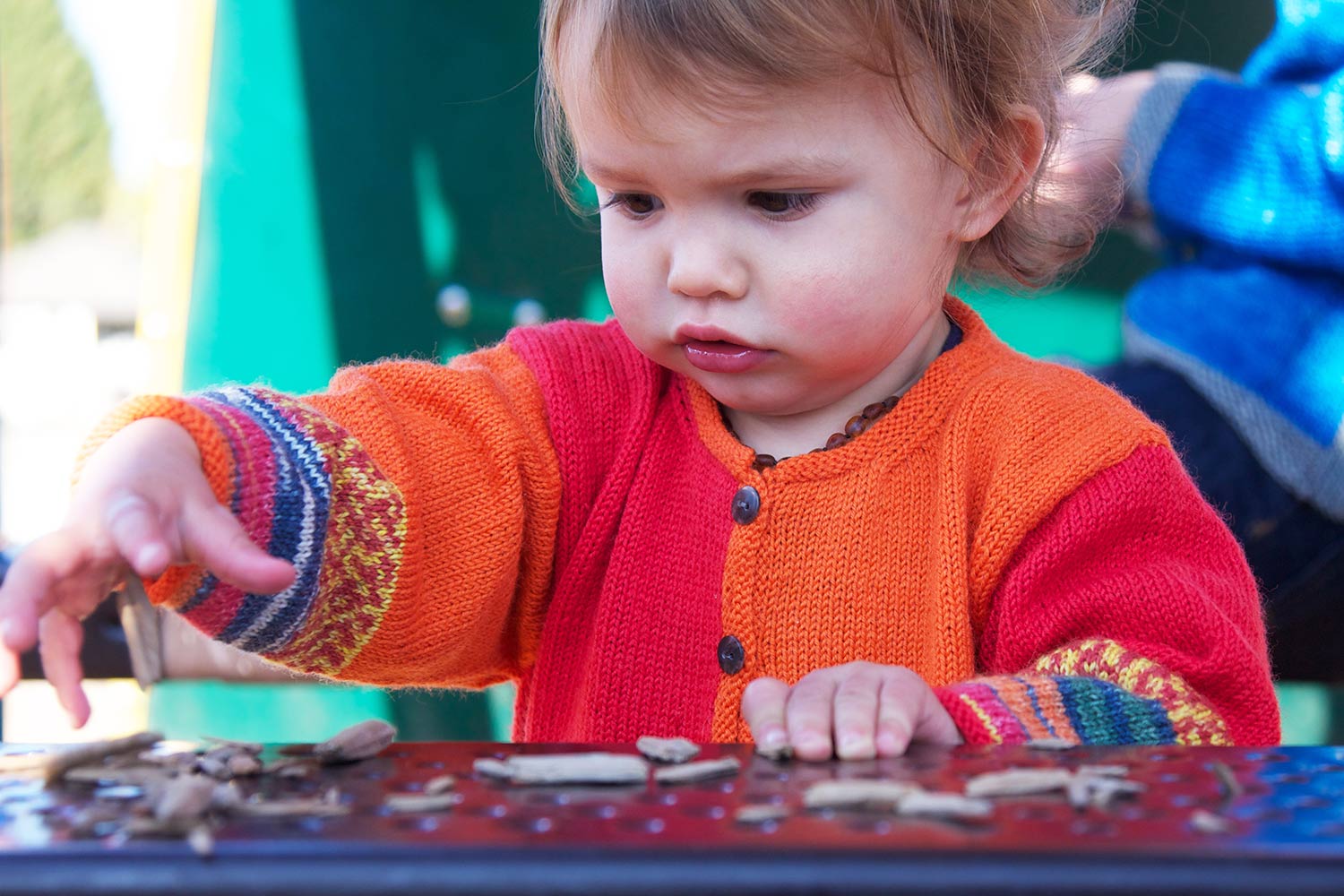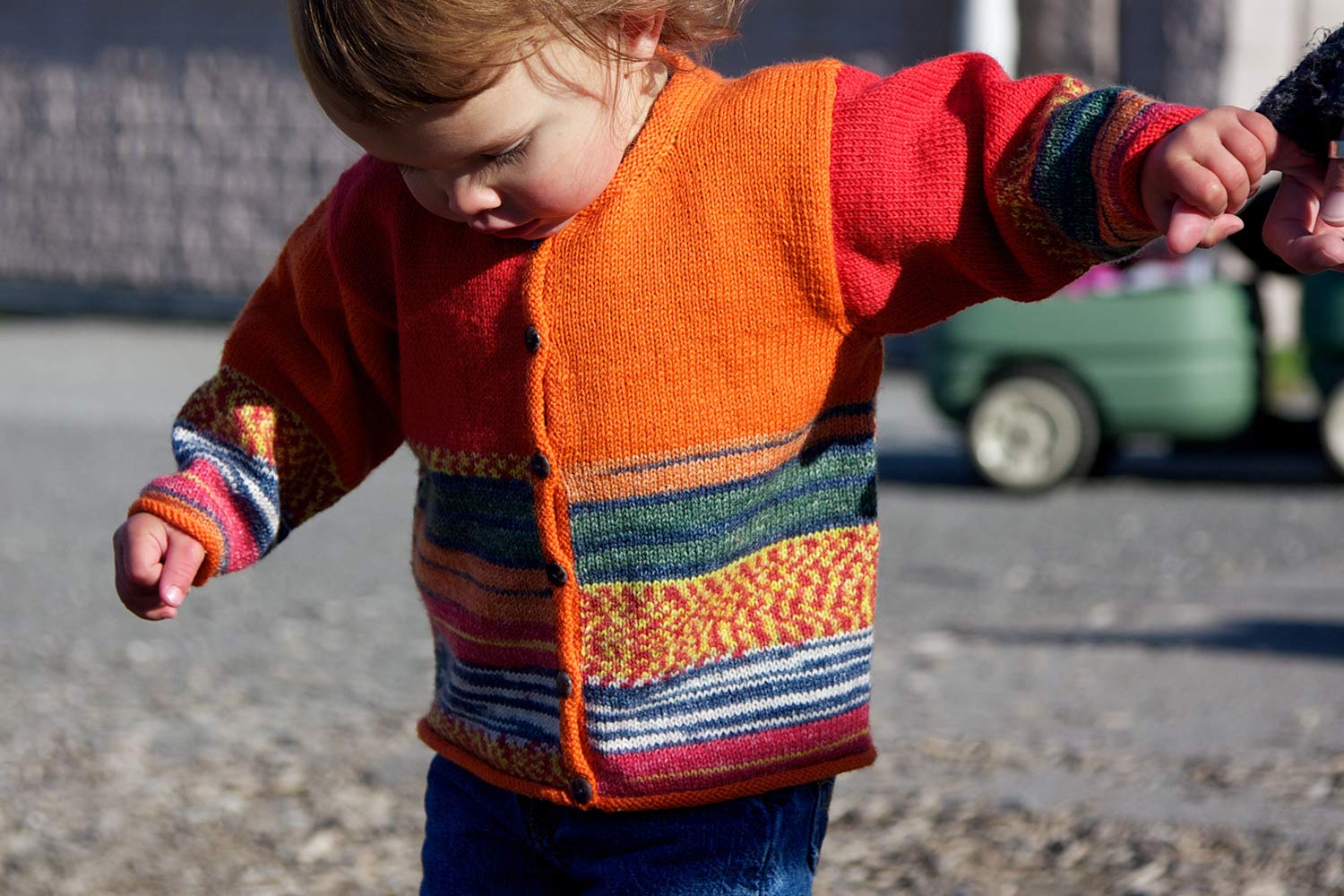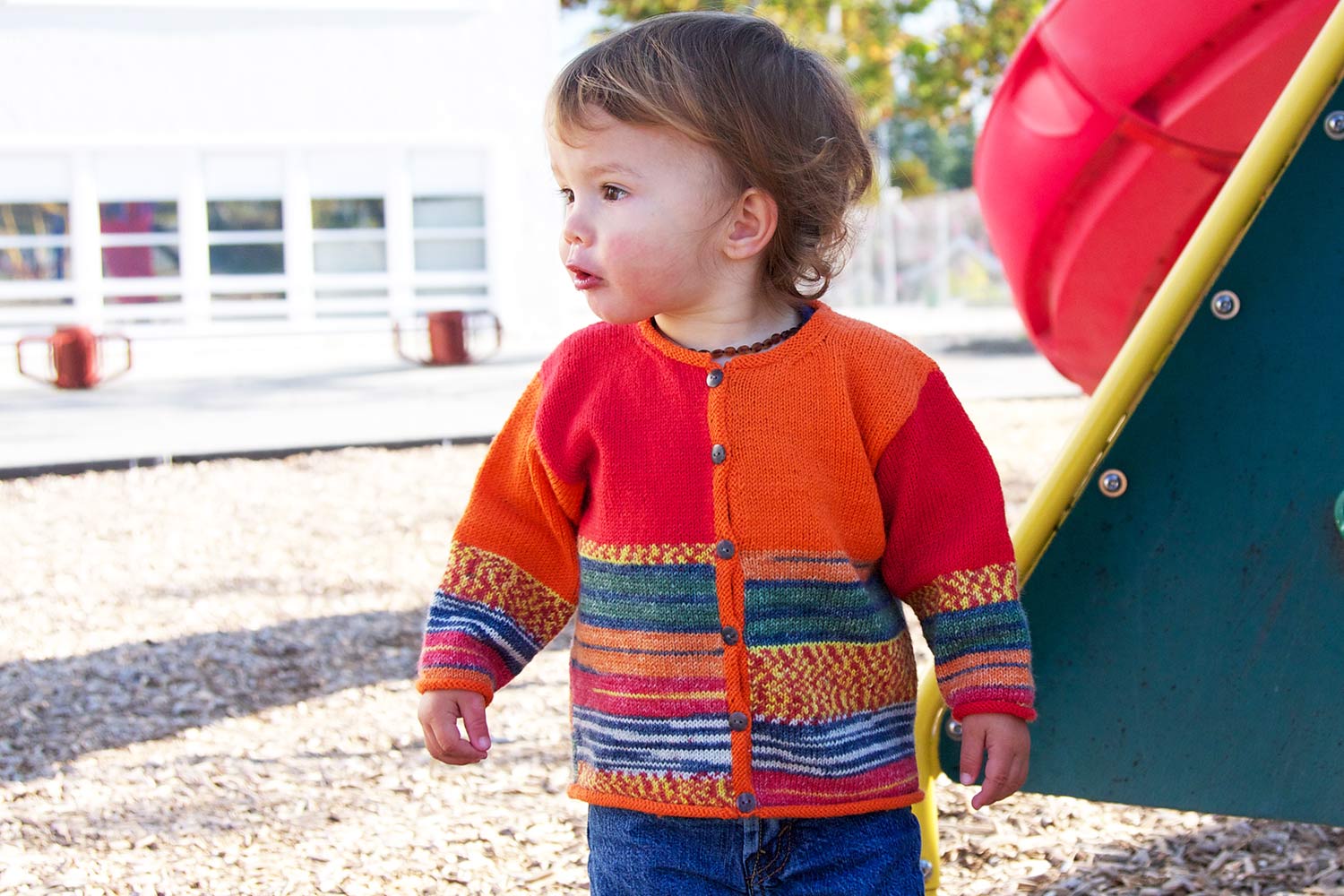Lucy
$12 CAD
Building blocks inspire a cardigan for the really active child. The solid-coloured upper section contrasts beautifully with the jewel-like tones of the self-patterning yarn.
The striping is ingenious in self-patterning sock yarn but works best with stitch counts that are vaguely similar to those of socks. Once you work a wider piece (like the back), the stripes stretch out and get narrower. In Lucy, the striping width is maintained in the self-patterning yarn by working it in narrower sections: each cardigan front width and sleeves. The striping width is solved on the wider back by working it in two intarsia blocks, taking yarn from different ends of the ball so the striping sequence is reversed.
Choose two solids to coordinate with the self-patterning yarn and you’ll have a winner!
Also available on
Share
Construction
This cardigan is worked bottom up, in pieces and seamed. The colour blocking is achieved using intarsia. It has modified set-in sleeves with a short sleeve cap. Shoulders are joined using three needle bind off. Stitches are picked up along the front edges and neckline and a rolled, reverse stocking stitch edging is worked.
What's Included
This knitting pattern includes written directions, front and back images, instructions for button placement on either front, a schematic with measurements, and thoughtful details.
Sizes + Finished Measurements
To fit 0-6 mo (6-12 mo, 1-2 yrs, 2-3 yrs).
Finished chest circumference: 21 (24, 26, 29 ½)” / 53.5 (61, 66, 75) cm
Back length: 10 (12, 13 ¾, 15)” / 25.5 (30.5, 35, 38) cm
Sleeve seam length: 6 ½ (7 ½, 8 ½, 10 ½)” / 16.5 (19, 21.5, 26.5) cm
Designed for a roomy fit with 1 ½ to 7” (4 to 17.5 cm) positive ease, with more ease for larger sizes.
Yarn
Fingering weight or sock yarn;
Self-patterning 184 (247, 302, 371) yd / 170 (230, 280, 345) m;
CC1 131 (174, 209, 254) yd / 125 (160, 195, 235) m;
CC2 99 (136, 169, 209) yd / 95 (130, 160, 195) m.
Shown in discontinued sock yarns (75% wool, 25% nylon; 229 yd /210 m per 50 g).
Substitution Notes
Any self-patterning sock weight or fingering yarn paired with two coordinating solid-coloured yarns may be used. Choose a yarn with easy care instructions. Superwash wool and sock yarns (whether wool or cotton blends) will work wonderfully. The self-patterning yarn may be substituted with a solid colour, a variegated yarn or a gradient yarn.
Gauge
30 sts and 42 rows to 4” (10cm) over stocking stitch using larger needles.
Needles + Notions
2.5 & 3 mm (US 1 ½ & 2 ½) Needles;
Stitch Holders.
Skills
Working intarsia from written instructions, increases/decreases, three-needle bind-off, basic modified set-in sleeve sweater construction, worked flat, bottom up, seaming, picking up stitches, buttonholes and sewing on buttons.
Related Tutorials
Blocking Hack
Raised Increases Photo Tutorial
Raised Increases Video Tutorial
SSK & SSP Decreases









